Chehel Dokhtaran Mausoleum: 1,000-Year-Old Mausoleum in Damghan
Chehel Dokhtaran Mausoleum is a remarkable historical site located in Damghan, Semnan Province, Iran. Also known as the "Tomb of Forty Girls," this ancient mausoleum stands as a testament to the architectural and cultural heritage of the 5th century AH (11th century AD).
Built under the orders of Abu Shuja Isfahani in 446 AH (1054 AD), the mausoleum features a unique design reminiscent of the Tower of Toghrul and the Radkan Minaret. Despite its age, the structure remains remarkably well-preserved, with intricate Kufic inscriptions still partially visible.
Despite its name, which translates to "forty girls," the origin and significance of this title remain shrouded in mystery. Some theories suggest the building once served as a mosque and school for women, while others connect it to ancient pre-Islamic traditions.
In this blog, we’ll delve into the rich history, explore the unique architectural style, pinpoint its exact location, and provide all the essential details you need before visiting this remarkable mausoleum.
Why Visit the Chehel Dokhtaran Mausoleum
- It has over 1,000 years of history.
- It is one of the few mausoleums that has remained completely intact through many years and natural disasters.
- It features exceptionally beautiful and eye-catching brick decorations.
About Chehel Dokhtaran Mausoleum
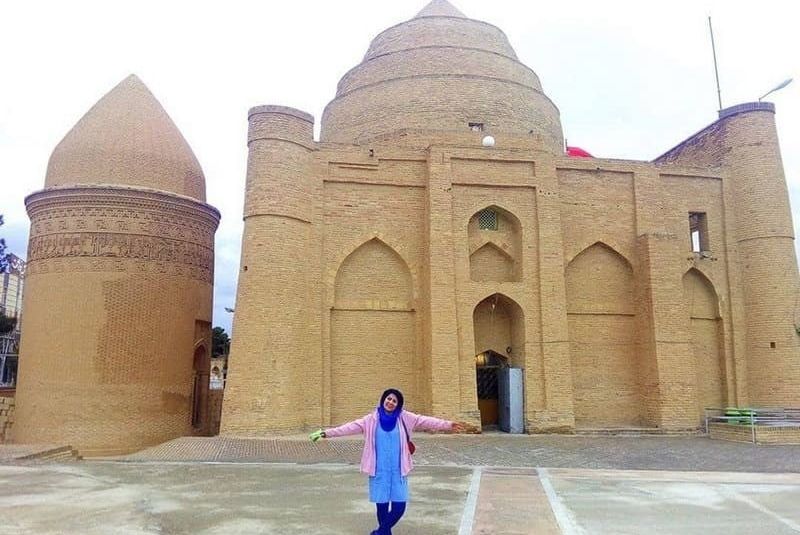
The Chehel Dokhtaran Mausoleum, also known as the Chehel Dokhtaran Tower, is a remarkable historical structure located in Damghan, Semnan Province, Iran. Dating back to the 5th century AH (11th century CE), this mausoleum was originally constructed in 446 AH (1054 CE) under the commission of Abu Shuja Isfahani.
It stands approximately 15 meters tall, with a 23-meter circumference and a 5.5-meter internal diameter, making it a significant example of ancient Persian architecture.
The mausoleum’s design bears similarities to the Toghrul Tower in Rey and the Mil Radkan. Its exterior features a Kufic inscription, which is difficult to read but includes the phrases “Ordered to build by the noble prince Abu Shuja” and "Three hundred”, indicating its 4th-century origin. The structure has remarkably withstood the test of time, showing no signs of deterioration.
Inside the mausoleum, there is a simple gypsum grave, whose occupant remains unknown. The Chehel Dokhtaran Mausoleum was officially registered as a national monument of Iran on January 5, 1931.
Despite various changes over the centuries, including potential reconstructions, the mausoleum remains a notable example of early Islamic architecture and craftsmanship.
Chehel Dokhtaran Mausoleum History
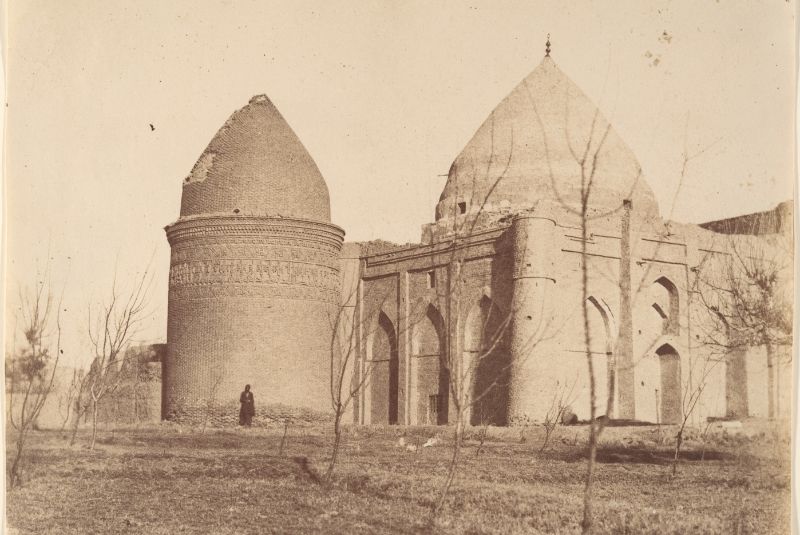
The Chehel Dokhtaran Mausoleum is a prime example of ancient Iranian architecture and a key site in Damghan. Despite being over a thousand years old, this tower remains remarkably well-preserved, with minimal damage compared to other historical sites.
Situated in the center of Damghan, within the precincts of the Imamzadeh Muhammad and Ja'far shrine, its visibility is somewhat obscured by its location behind the shrine and its placement below the surrounding ground level.
Scholars believe that the 4th and 5th centuries were significant for architectural advancements in Iran, particularly in brickwork. During this period, many notable buildings, including mosques and mausoleums, were adorned with intricate brick designs. The Chehel Dokhtaran Mausoleum, with its elegant brickwork, exemplifies this artistic era.
Originally constructed from unbaked bricks, the mausoleum was later rebuilt with baked bricks by Abu Shuja, whose exact identity remains unclear. This reconstruction, which took place between the 4th and 5th centuries, retained the original design but incorporated a conical roof and more durable materials. The tower stands at approximately 15 meters high, with an inner diameter of 5.5 meters and an outer circumference of 23 meters.
The Chehel Dokhtaran Tower's design shares similarities with other prominent towers of the period, such as the Toghrul Tower and the Mil-e Radkan. Archaeologists date the tower to 446 AH (1054 CE), as indicated by an inscription in Kufic script on the tower's exterior. Despite its age, the tower has weathered natural disasters remarkably well, showcasing the skill and artistry of its builders.
Chehel Dokhtaran Mausoleum Architecture

The Chehel Dokhtaran Mausoleum, located in Damghan, showcases remarkable architectural features that have allowed it to stand resiliently for nearly a thousand years.
Despite its relatively small size, the mausoleum's renowned attributes include its intricate brickwork, inscriptions, and the quality of materials used, which have contributed to its enduring preservation. This mausoleum is situated approximately 275 centimeters away from its accompanying tomb.
Structure and Dimensions
The Chehel Dokhtaran Mausoleum is a cylindrical structure rising to a height of 15 meters. It features an internal diameter of 5.2 meters and an external diameter of 7.8 meters.
The tower consists of two main sections: the lower two-thirds of the structure is simply adorned with brickwork, while the upper section features an inscription in Kufic script, accompanied by decorative brick bands. At the very top, the mausoleum is crowned with a conical dome, which is also adorned with simple brickwork.
The precision in the placement of the bricks is so meticulous that it appears as though no mortar was used, reflecting the skill of the builders. The mausoleum has a wooden door on its southern side, which was added in recent years. Above this door, another Kufic inscription provides details about the tower's construction.
Entrance and Interior
The entrance to the mausoleum measures 2.5 meters in height and about 2 meters in width. The Kufic script around the door and the surrounding inscriptions are difficult to read due to their intricate design. Inside the tower, a simple gypsum tomb is centrally located, standing 30 centimeters above the ground with no decorative features. The identity of the tomb's occupant remains unknown.
Dome and Aesthetic Appeal
The most striking feature of the mausoleum is its dome, which represents a remarkable achievement in 5th and 6th-century architecture. This single-shell dome has survived almost 900 years without cracks in a seismically active region, demonstrating the precision of architectural mathematics and mechanics of the era. The dome, much like the Gombad-e Qabus, was constructed with the intention of lasting through the ages.
The rise of Sufism during this period greatly influenced architectural developments, leading to the creation of numerous tombs and shrines as places of pilgrimage and worship.
The materials used in the mausoleum include mudbrick, clay, and baked brick. The creation of durable bricks that can withstand water, pressure, and various colors is a testament to the builders' deep understanding of soil and material properties.
Brickwork and Decorative Elements
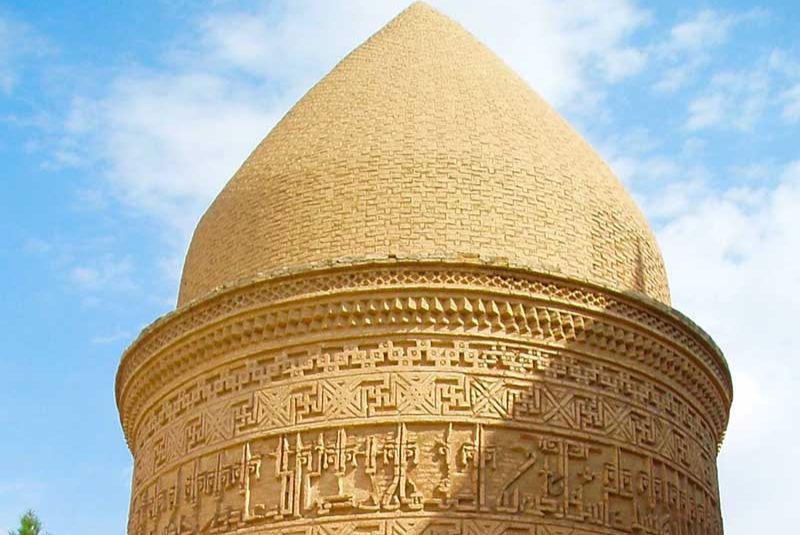
The brickwork technique used in the Chehel Dokhtaran Mausoleum is notable for its intricate and artistic application. This period saw a significant advancement in brick artistry, with many buildings of the time featuring elaborate brick decorations. The use of decorative bands and patterns around the dome and structure exemplifies the harmony and craftsmanship characteristic of Iranian art.
The external façade and the dome of the mausoleum are adorned with geometric patterns, including polygons, rectangles, squares, trapezoids, and zigzags, all intricately crafted with bricks of various sizes and shapes. These designs reflect a sophisticated aesthetic that is emblematic of the era.
Inscription and Historical Context
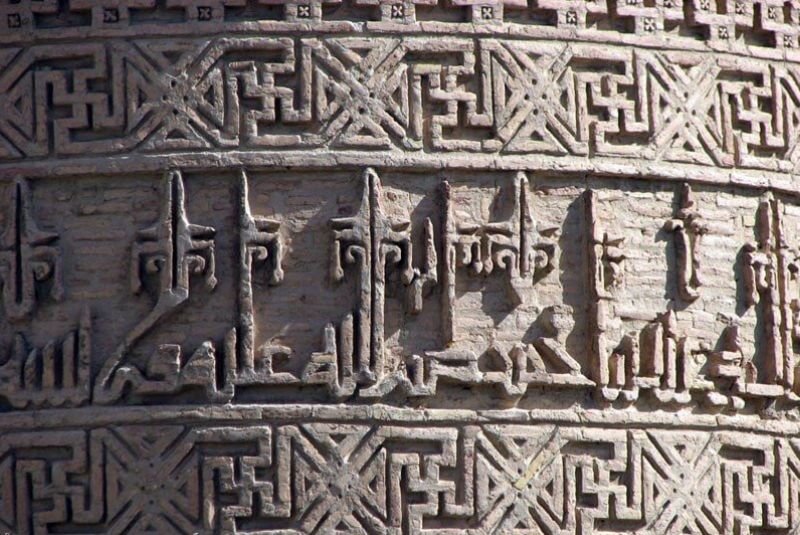
The inscription on the mausoleum, located beneath the decorative brick cornices, is partially legible. It begins with "Order of the construction of this dome," followed by references to "Amir Abu Shuja" and other names, indicating the patronage behind the mausoleum. The inscription reveals that the mausoleum was erected as a final resting place for the patron and his sons, with a plea for divine forgiveness and intercession.
Chehel Dokhtaran Mausoleum Location and Access
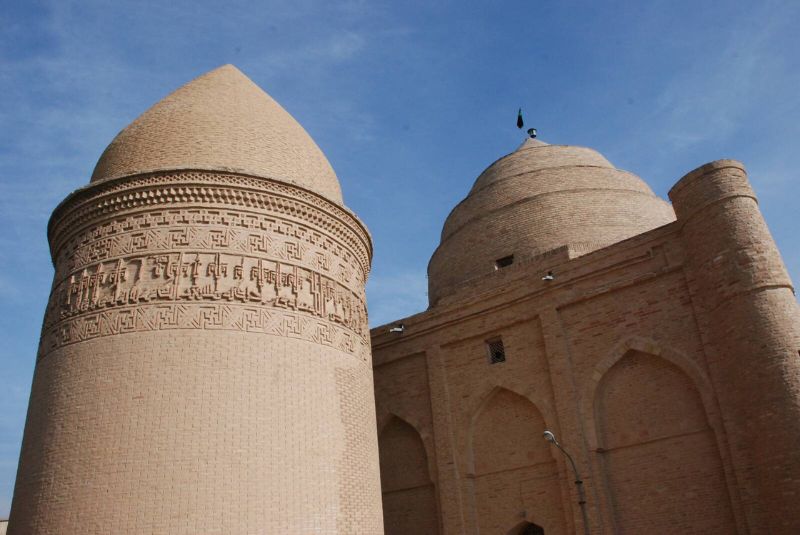
The Chehel Dokhtaran Mausoleum is located in Damghan, Semnan Province, Iran. Specifically, it can be found on Falahhi Street, behind the Imamzadeh Ja'far Shrine.
How to Get There
To reach the mausoleum by car, travel from Semnan to Damghan, which takes approximately 1 hour and 20 minutes. Upon entering Damghan, follow the signs to Shahid Mofatteh Street. Continue past Shahid Mofatteh Square and turn onto Imam Khomeini Boulevard. The Chehel Dokhtaran Mausoleum will be on your left.
Best Time to Visit Chehel Dokhtaran Mausoleum
The ideal time to visit the Tomb of forty girls is during the warmer months and the first half of the year. Semnan, where Damghan is located, experiences a desert and semi-desert climate, so cooler temperatures in spring and early summer are more comfortable for exploring the historic site.
Tourist Attractions Near Chehel Dokhtaran Mausoleum
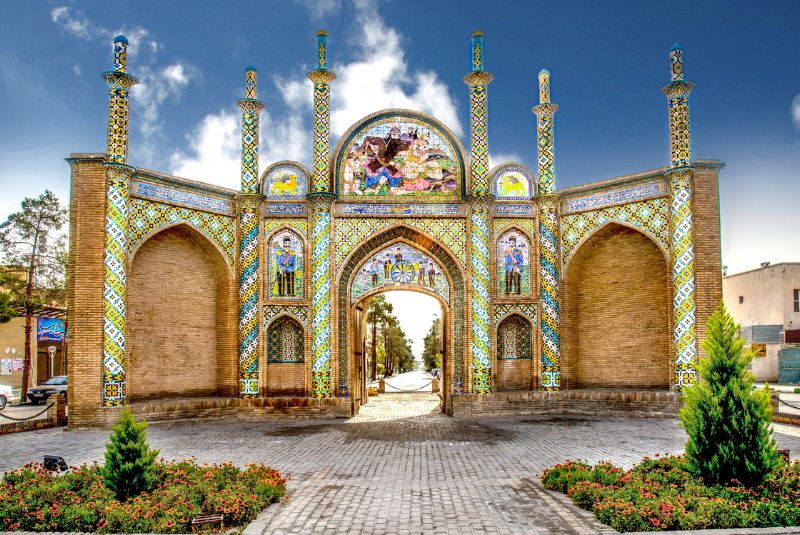
Near the Chehel Dokhtaran Mausoleum, you can explore several notable attractions, including:
- Arg Gate Square in Semnan
- Pire Alamdar Tower
- Lotfi House
- Zangole Dome
- Shah Abbasi Caravanserai
- Tarikhaneh Mosque
Restaurants and Hotels Near Chehel Dokhtaran Mausoleum

Near the Chehel Dokhtaran Mausoleum, you can enjoy dining at:
- Searchef Restaurant
- Qajariyeh Restaurant
For accommodation, nearby options include:
- Damaghan International Hotel
- Culturalian Hotel
- Danesh Hotel
- Padari Eco-Lodge
Bottom Line
The Chehel Dokhtaran Mausoleum in Damghan is a stunning example of 11th-century Iranian architecture, renowned for its remarkable preservation and intricate brickwork. Standing for over a thousand years, it features a distinctive conical dome and detailed Kufic inscriptions.
This historical site, once a potential mosque or school, continues to captivate visitors with its blend of artistic and architectural excellence. The mausoleum's resilience and beauty make it a must-visit for those interested in Iran's rich heritage.
Share your story!
Comment below and let us know about your Experience.
Your story inspires others!


Comment
Leave a Comment